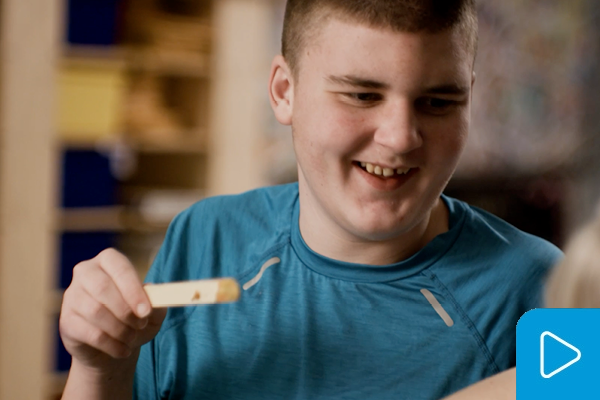3 MIN READ
What is PDA or Pathological Demand Avoidance
By: Tristen Moore-CARE Coordinator

Pathological Demand Avoidance (PDA) is a profile of autism that is not yet diagnosed or recognized here in the United States. Most research and studying of PDA has been done in the UK. Because of that, all of the information being shared in this blog post is from the National Autistic Society in the UK. Please keep that in mind when reading some of the words and phrases used in this post. If you'd like more information, go to autism.org.uk.
PDA is a profile on the autism spectrum involving avoidance of everyday demands and the use of 'social' strategies as part of this avoidance. The name Pathological Demand Avoidance may sound harsh to some but many have expressed that this accurately describes how they feel.
The idea behind the name is that an individual will go to pathological lengths in order to avoid a task. Meaning that the individual may do things they would never see themselves doing but the pull to avoid the task is so strong that they can't help but go to such lengths.
This profile was first discovered in the 1980s by Elizabeth Newson. A "profile" in autism refers to shared autistic tendencies including 'difficulties' with social communication and interaction, restrictive and repetitive behaviors, activities, and interests, and having different sensory experiences. PDA can look similar to Oppositional Defiance Disorder, Reactive Attachment Disorder, Personality Disorders, or Developmental Trauma. Drs. Judy Eaton and Kaylee Weaver have been doing research on how to differentiate these disorders to more accurately diagnose individuals.
In the next couple paragraphs, I will share some of the "shared autistic tendencies" in the PDA profile. Masking is something that is very common, with those who have PDA especially but also others on the autism spectrum as well. Masking means that a person may 'put away' their natural tendencies or behaviors in order to 'fit in', to be able to follow demands, or do what they think they're supposed to do. As you can imagine, doing the opposite of your natural tendencies can be exhausting. A person can mask for several hours in a day, repressing their inner feelings or emotions to make sure they act how they think they are supposed to. This can cause an upset when the individual is finally comfortable enough to unmask and let their repressed emotions out. 'Distressed behaviors' may occur during this time when held-in emotions are finally let out. According to the National Autistic Society, distressed behaviors can look like meltdowns, physical or verbal aggression, self-injurious behaviors, shutdowns, and taking flight. Distressed behaviors may not always occur but they could be the result of an overflow of emotion.
Extreme pretend play may also be a behavior In the PDA profile. Extreme Pretend Play is often shown when someone's brain does not allow them to do a task requested by themselves or someone else so they escape into pretend play. This can look like your mom telling you to put your shoes on but you're pretending to be a cat so you can't put your shoes on because cats don't wear shoes. Another example is if you're told to go to school but you're a firefighter and firefighters don't go to school. Many people with PDA have a need for control but this need is driven due to anxiety not necessarily because they want to be right or in charge. There are many more shared tendencies that you can look into at autism.org.uk.
Now that you have a high-level understanding of what PDA is, the next question is, how can you help. The National Autistic Society has created a helpful tool called PANDA. These are approaches that can be used to help your kiddo with PDA.
P - Pick your battles
A - Anxiety Management
N - Negotiation and Collaboration
D - Disguise and Manage Demands
A - Adaptation




